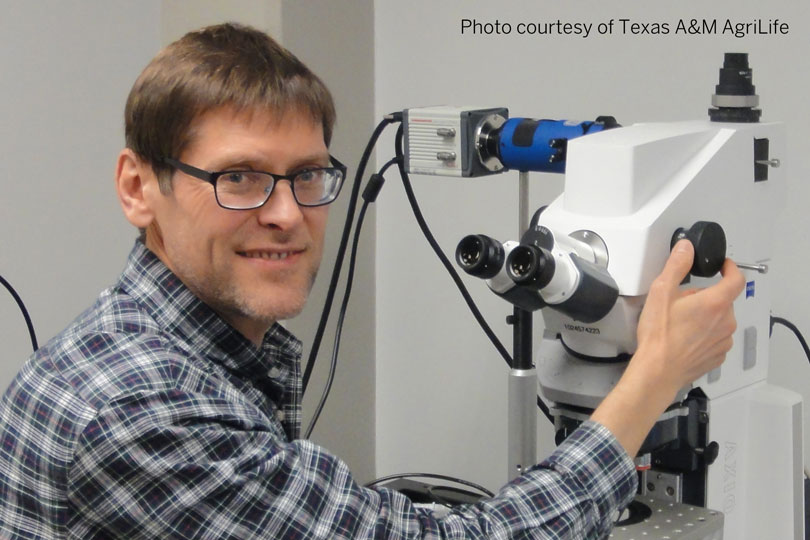By Justin Walker
Communications Specialist
A group of Texas A&M AgriLife Research scientists are using fruit flies to better understand muscular dystrophy in humans.
Dr. Vlad Panin, a professor in the Department of Biochemistry and Biophysics at Texas A&M University, said the research team used fruit flies to study certain aspects of muscular dystrophy development. Panin said the research could help medical doctors prescribe adequate therapies.
“Fruit flies are very much like humans in how their genes, cells and organs function during development in adult life and aging,” Panin told AgriLife Today. “We work with fruit flies to get a better understanding of how human glycosylated proteins work since their functions are similar in flies.”
The genetic makeup in flies is more simplified than in humans. The flies also have a shorter life cycle, which aids scientists in genetic experiments.
Panin and his team focused on Protein O-mannosyltransferase, or POMT, an enzyme that modifies properties of other proteins, an essential process for normal function of muscles and the nervous system. When POMT genes are mutated, it is known to cause severe muscular dystrophies and neurological abnormalities.
It is not well known how POMT genes impact muscles and the nervous system. There is no cure for the diseases associated with defects in these genes. Panin and his team are trying to discover POMT functions by studying fruit flies with mutations in these genes.
The study found that muscle contractions are abnormal in POMT mutations due to neurons not making proper connections in the nervous system. These findings suggest POMT proteins are crucial for sensory neurons to connect normally. These normal connections help control coordinated muscle contractions and body posture.
“Our findings shed light on a novel link between muscle and neural abnormalities in POMT mutant fruit flies, which may help understand similar pathogenic mechanisms in mammals and reveal causes of neurological defects in muscular dystrophies,” Panin said. “We don’t fully yet understand these mechanisms. But we certainly hope that our work will guide future medical studies and will help eventually develop effective therapies for patients with these debilitating diseases.”

